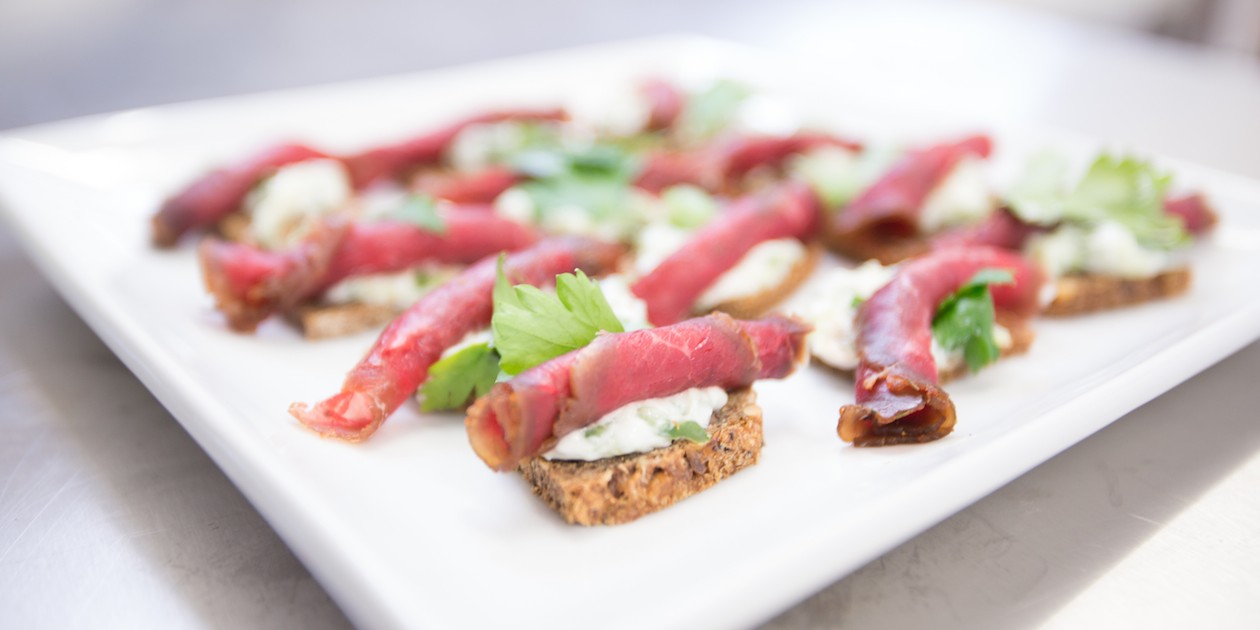Trend watchers, chefs and foodies alike stand united on vegetables — once lowly or overlooked as a side, they’re being elevated to a starring role.
Christine Couvelier says 2015 has been an amazing year for vegetables and the root-to-leaf movement will continue in 2016 with more creative preparations, from grilling and smoking to roasting and charring.
“We thought seeing whole roasted cauliflowers was a wow on some menus, but that’s just the tip of the iceberg,” says the Victoria-based Couvelier, whose Culinary Concierge company helps clients around North America keep ahead of market trends.
“I think it’s a continuation on understanding fresh and local and being very innovative and creative in the kitchen,” she says.
“I think a lot of it also is consumers understanding the health benefits around that style of eating, too. We’re not saying not to have meat, but all in proportion and looking to vegetables to fill a great deal of the plate.”
Quebec celebrity chef Ricardo Larrivee predicts the comeback of the Jerusalem artichoke, or sunchoke. The gnarly tuber can be served as a puree and in soup, and its yellow flowers make a colourful addition to the garden.
Couvelier also sees hummus emerging as the new salsa, juice bars as the new coffee shops, and fried chicken being the new pork belly. Fried chicken, often paired with waffles, can feature different seasonings and be made spicy, sweet, brined or crusted.
High in protein and fibre and low in fat, hummus can be an appetizer, dip, spread or part of a main course.
“It’s recognizable in its original form and accepted, so now people are branching out and they’re eager to try something different,” says Couvelier, who’s had black bean hummus, edamame hummus with roasted red peppers, spicy yellow lentil hummus and a zesty Sriracha carrot hummus.
Increasingly popping up on restaurant menus is toast.
“It is certainly a very innovative dish to develop recipes and thoughts around. I’m watching it as the ingredient of the year,” says Couvelier.
“A lot of restaurants I’ve been in in the last six or nine months, they have great toast offerings.”
She’s had pickled anchovies and tomato toast and smoked chicken and walnut Waldorf toast at Steak Bird Provisions in San Francisco. Purple Pig in Chicago has a menu section called Smears, with toast and toppings including roasted bone marrow, liver pate, or pork neckbone gravy with ricotta.
“It can be any time of day — breakfast, lunch, snacking, appetizer, for dinner. You can share it,” she says of eating toast.
Restaurateurs are also embracing more customer choice.
“We now see the phenomenon of what we call the clockless menu, so ‘I want to eat when I want, what I want, where I want 24-7.’ All-day breakfast is huge right now and we’re seeing that creep into the dinner service as well,” says Donna Dooher, president and CEO of Restaurants Canada.
Operators are also deconstructing the plate, then charging for each item separately.
“Everything is about construct your own: construct your own burger, construct your own risotto, construct your own dinner.”
Other trends that Couvelier predicts will grow next year:
- More of the complex flavour combination of sweet and heat. Consider chilies and honey, Sriracha and maple syrup drizzled over roasted vegetables, honey and wasabi on chicken, jalapeno-infused honey and Sriracha peach jam.
- Savoury yogurt could go mainstream. Unexpected flavours developed in the kitchens of Blue Hill and Blue Hill Stone Barns, two of New York’s top farm-to-table destinations, include butternut squash, beet, tomato, carrot, sweet potato and parsnip. “When you think of it as an ingredient application it’s brilliant,” says Couvelier. You can make a lower-fat salad dressing, soup or sauce with a flavour boost from the vegetable yogurt.
- Bartenders and mixologists will experiment more with shrubs — and not the green bushes used in landscaping. Shrubs are created when you preserve fruit with vinegar, sugar and water. They allow for new punches, cocktails and spritzes.
- Ice cubes that are carved into shapes or infused with flavoured smoke or alcohol. As the ice melts it doesn’t water down your drink. “But at the same time, it’s giving you a different flavour at different times when you sip the drink, because it would change as the ice melted a little bit. Say you had mint or citrus in the ice cube as well, that would infuse it differently as it started to melt,” says Couvelier.










